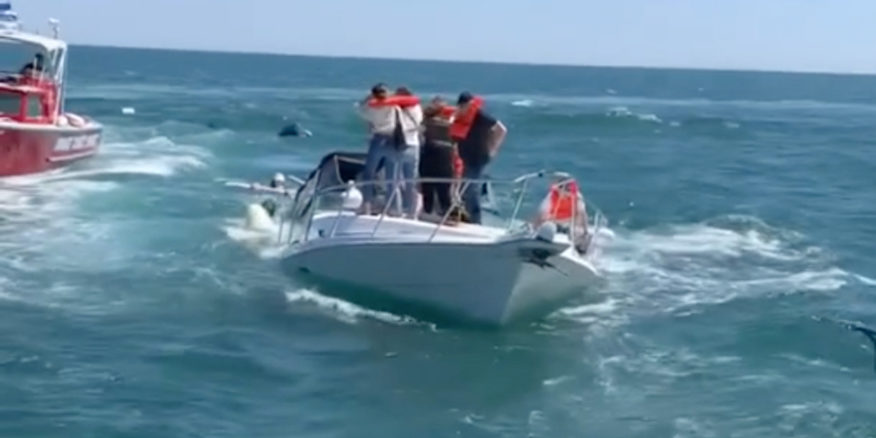Sometimes we can have a false sense of security going offshore after having our boat serviced. We place trust in the competence of the service provider that may not be completely well founded. Following is a lesson learned that fortunately ended well. We’ll also review a few related factors that should be addressed before going offshore.
Loss Of Watertight Integrity

Note dual bilge pumps and float switches. Bilge area must be kept clean to prevent clogs.
After receiving his boat back from marina service, a skipper hosted a crew of fishermen for a day of offshore fishing. The weather deteriorated, and the party headed back to port, through following seas. After a while, the boat started to bog down; there was no question there was water in the hull.
The skipper discovered that the bilge pump would not turn on manually, so he resorted to running at 4000 rpm, causing a bit of a beating, but effective at limiting the inflow. He was now 15 miles from shore. The skipper took the precaution of double-checking PFD use by all aboard and prepared to call USCG and Seatow if the situation got any worse.
Fortunately, the boat arrived at the boat ramp. With no power applied, the stern settled, and water was well over ankle deep in the cockpit. The crew was able to recover the boat on the trailer. With the drain plug pulled, the boat eventually drained successfully.
Causes And Lessons
The marina mechanic had worked on the bait well, detailed the boat and installed new batteries. The cause of the swamping turned out to be a clogged bilge pump combined with waterline scuppers. Prior to departure, the skipper did not check the condition of the bilge pump, which had been clogged by leaves when the boat was detailed.
There were some other factors that needed correction for safe offshore voyaging.
1. There was only one electric bilge pump and no manual pump was on board.
2. The boat had one other through-hull fitting besides the drain plug, that being the bait well inlet.
3. Before going offshore the owner did not check the sea cock on the bait well inlet. While not an excuse or a cause of the swamping, the boat had extremely poor access to the bilge fittings.

Example of a good sized, clamp-locked inspection hatch (Bomar G8102022). It provides 9-3/4″ x 19-1/2″ access.
4. While offshore, there was no attempt to gain access to the bilge to discover the source of the leak. It could have been a hose that needed reconnecting or a hose clamp that needed tightening or replacement.
5. The skipper did not call in his situation to the Coast Guard and set up a communications schedule.
6. Mechanics are notorious for getting in a rush and not checking everything around their work area for plumbing or electrical faults before returning the boat to the owner. A shakedown cruise is absolutely necessary after service before going offshore.
7. Before leaving the dock, the skipper should test operation of all the pumps and be sure to check the bilge for any leaks.
8. Someone aboard should bring a ditch bag, making sure there are unexpired flares, a first aid kit, portable navigation and communications units with fresh batteries and spares.
9. All boats going offshore should add a high water alarm to the bilge unless already equipped and even so, be sure to check the bilge often.
Bilge Access

This type of “pie plate” inspection plate is too small for most bilge maintenance needs and often lacks watertight security.
Boat owners should give some attention to the access ports provided. The common “pie plate” access ports often pop loose or leak as a result of a hardened o-ring or gasket. These are often too small to be of any use when having to work in the bilge during an emergency, let alone at the dock. All too often, inspection ports are positioned and considered by manufacturers to be construction aids rather than real-life operational necessities. The prudent skipper will add functionally sized ports where needed for safe operation and easy maintenance.
Be very careful going offshore in any boat that drains lockers, bait wells or scuppers into the bilge. We covered these risks in an earlier post.
Reference:
https://www.thehulltruth.com/boating-forum/1091853-almost-needed-epirb-safety-first-2.html







